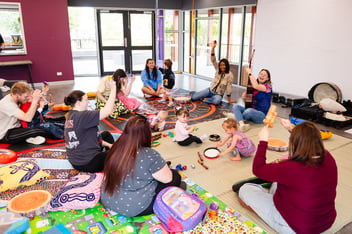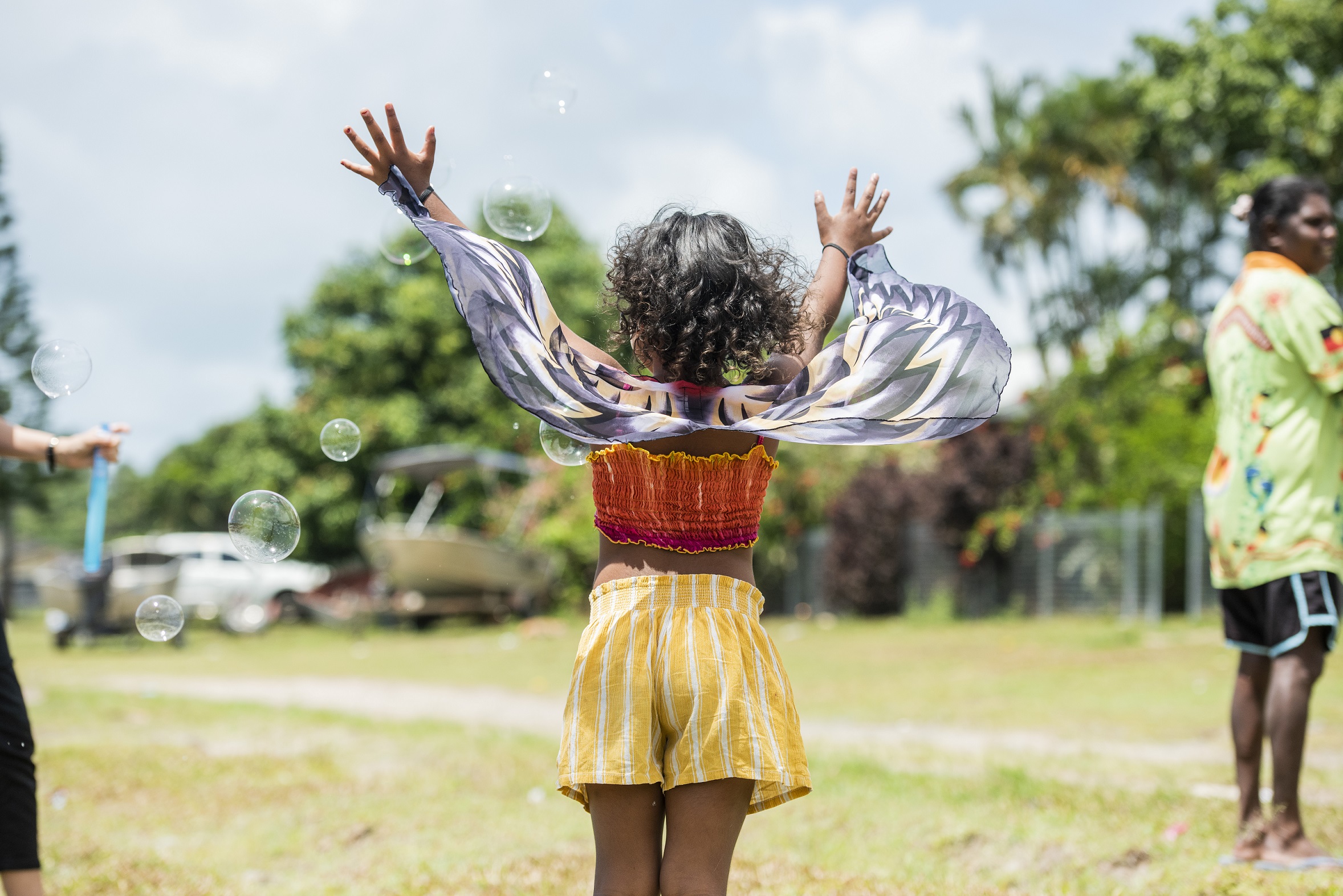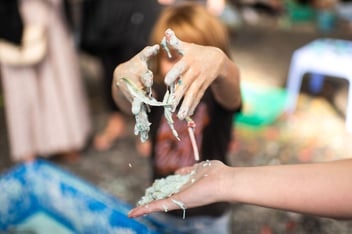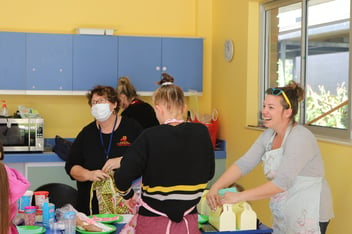
Why Imaginative Play Matters
Blog > Why Imaginative Play Matters

Why Imaginative Play Matters

Inspiring Children to Discover the Magic of Make-believe
Using their imagination comes naturally to kids. They’ll happily pretend pirates are chasing them around the playground, or that their teddies are ballerinas dancing across a stage, and their dolls are real babies they tuck into bed. Imaginative play is vital to children’s development and something every carer, teacher, and parent should encourage.
Whether you call it make-believe, fantasy, dramatic, pretend, or imaginative play – getting creative with their minds provides many advantages to children. It helps them improve physical development, understand other people’s perspectives, and improve problem-solving skills.
It’s also an excellent way to bring children together by giving them the freedom to become whoever or whatever they choose!
.jpg?width=731&height=487&name=JOSEPHBYFORD-100652-0206(1).jpg)
Mastering Their Body
Imaginative play teaches children coordination and fine motor skills. Their little fingers have to grasp small objects such as when they’re combining little ingredients like glitter, beads, and wool in a bottle to make a “magic potion”.
It’s also excellent for hand-eye coordination and improving physical skills such as balancing, jumping, and climbing. Children may clamber over obstacles to escape a dragon or squirt water at a target to put out an imaginary fire.
Along with the physical aspects of imaginary play, it’s a fantastic tool for teaching self-regulation. Situations pop up where not everyone gets to have the role they want. In playtime, there are often debates about who gets to play more coveted leadership roles, like acting as the parent, king or queen, or chef while others need to take on supporting roles These types of scenarios provide opportunities for children to work through their emotions, learn skills in negotiation and compromise and sharing. They start to learn how to cope with situations that they may feel are unfair and advocate for themselves.

Modelling Positive Behaviours
Role playing has always been an effective teaching tool and imaginative play gives parents and educators the chance to use this in a positive way. Teachable moments can be woven into the story of the game the kids are playing with the supervising adult asking questions. Try prompting kids to work through potential problems by asking questions like the ones below. Open-ended questions like these also help to demonstrate that you’re interested in and value their opinion.
- Where are we going?
- Which way should we go?
- We forgot to bring (water/sunscreen/food) what are we going to do?
- Why did that happen?
- How do you feel when that happens?
- Dolly/Teddy looks upset, how can you help them feel better?
- What can you hear?
- What does it feel like?
- What else could we use for that?
Along with developing problem-solving skills, imaginative play helps to build social and language skills. Children may need to negotiate during situations they wouldn't normally come across in real life. They may also need to share toys or equipment and take turns, both of which are vital skills every child must learn.
When a conflict arises, educators and parents can join the story to help provide or guide children towards a resolution in a fun way.
.jpg?width=731&height=487&name=10_33_520010(1).jpg)
Celebrating Imaginative Play
Encouraging children to use their imaginations not only helps them with developmental skills, it’s also a recipe for happy kids!
Try one of the ideas below to help children get creative with their play.
Host a costume party
Dressing up is a favourite pastime of children as they cast themselves in their favourite characters. Provide them with a pile of outfits and accessories to rummage through. Choose clothes that they can mix and match to create their own unique personas.
Create a cooking event
Provide children with cooking props such as bowls, spoons, scales, measuring cups and rolling pins. Then let them create food using craft supplies such as glues sticks, crepe paper, twine, pom poms and pop sticks. Once their food ingredients are made, they can get busy cooking with them.
Make a magic day
Gather up supplies such as sequins, scarves, hats, wands and paint then let the children create their own magical tools and outfits. Get them to explore the space around them pretending that it’s filled with magical items such as gemstones, floating carpets, glowing orbs and mystical caves.
Put on a show
Ask the children what types of music they enjoy listening to and create a show based on their favourite songs. Let them choose an act to perform such as from singing, dancing, juggling, acrobatics or comedy.
Go on a safari
Give the kids toy some binoculars or even make some using cardboard rolls, ribbon and sticky tape. Then get the children to imagine they’re going animal spotting on safari. You could even have some of the children dress up as animals and hide for the explorers to find.
To inspire imaginative play at home, create a designated space where props are readily available. This might include age-appropriate toys such as a mini kitchen, trades tools, medical equipment or best of all – cardboard boxes. Children love to take a box and turn into a house for their dinosaurs, a rocket, a bed for teddies or a fairy’s home.
Every so often, go through the toys you’ve provided and rotate them with some news ones. You can keep the old ones packed away ready to bring out again to inspire new play.
Remember to let them be the boss of their creative play time. Showing interest and letting them decide how the game goes empowers children to try new things.
Bringing imagination into play time has been found to lower anxiety, help children express their feelings and improve concentration. It’s a confidence booster and grows their knowledge about life and the environments around them too.
Imaginative play provides kids with a safe and joyful way to explore the world.
Find a play experience near you:
Subscribe to our newsletter >
Related content:
Advertisement:
.jpg)








